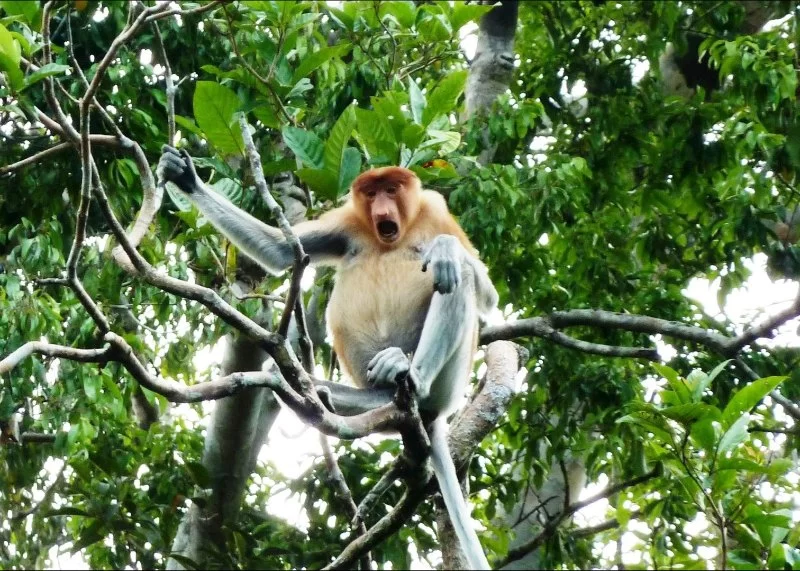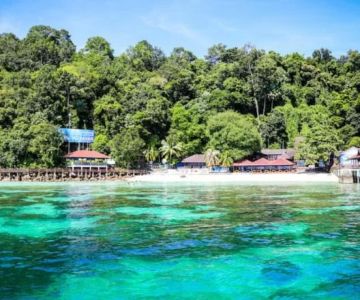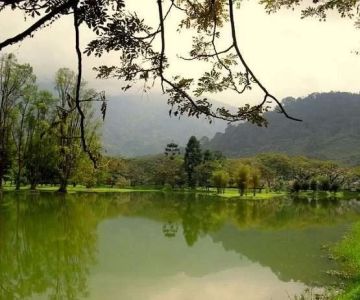
- why-malaysia-is-a-prime-destination-for-monkey-watching - Why Malaysia Is a Prime Destination for Monkey Watching
- top-nature-reserves-with-monkeys-in-malaysia - Top Nature Reserves with Monkeys in Malaysia
- what-to-expect-when-visiting-monkey-reserves - What to Expect When Visiting Monkey Reserves
- real-travel-stories-from-nature-lovers - Real Travel Stories from Nature Lovers
- tips-for-an-ethical-and-enjoyable-visit - Tips for an Ethical and Enjoyable Visit
1. Why Malaysia Is a Prime Destination for Monkey Watching
Malaysia is a biodiversity hotspot in Southeast Asia, home to lush rainforests, mangrove swamps, and tropical highlands. Among the many animals that live here, monkeys stand out as some of the most fascinating to observe in the wild. From long-tailed macaques to dusky leaf monkeys and the rare proboscis monkeys, Malaysia offers an unmatched variety of primate encounters.
For travelers looking for nature reserves with monkeys in Malaysia, the country delivers with well-preserved parks and accessible eco-tourism destinations that balance adventure and conservation. Whether you're an avid wildlife photographer or a family with kids, these reserves provide immersive experiences in natural habitats.
2. Top Nature Reserves with Monkeys in Malaysia
2.1 Bako National Park – Sarawak
Located in Borneo’s Sarawak region, Bako National Park is one of the best places to spot proboscis monkeys in their natural habitat. These large-nosed primates are endemic to Borneo and are often seen near the mangrove areas at dusk. Bako is also home to silvered langurs and long-tailed macaques, offering diverse monkey sightings during jungle treks.
2.2 Bukit Melawati – Selangor
A favorite weekend spot for locals, Bukit Melawati hosts a colony of silvered leaf monkeys that are unusually friendly with visitors. While feeding them is discouraged for ethical reasons, simply observing their behavior from up close is an enriching experience. The location is also family-friendly and offers historical attractions.
2.3 Penang National Park – Penang
This coastal park features jungle trails that lead to hidden beaches, canopy walks, and encounters with crab-eating macaques along the way. Visitors often report spontaneous monkey sightings on the way to Monkey Beach, aptly named for its primate residents. The park's biodiversity makes it an ideal stop for wildlife and nature enthusiasts.
2.4 Taman Negara – Pahang
As one of the oldest rainforests in the world, Taman Negara is rich in wildlife. While monkeys aren’t guaranteed at every step, long-tailed macaques and dusky leaf monkeys are commonly spotted near riverbanks and forest edges. Jungle lodges and guided night walks increase your chances of seeing these primates in the wild.
You can explore the best tour packages, guided experiences, and eco-accommodation options through UAK Travel, making your wildlife adventure both convenient and memorable.
3. What to Expect When Visiting Monkey Reserves
3.1 Natural Behavior and Observation Etiquette
Monkeys in Malaysia’s nature reserves are generally wild but habituated to human presence. You may observe grooming rituals, vocal communication, or even territorial behavior. It’s crucial to maintain a respectful distance and never feed or provoke them. Some parks have strict policies to protect both animals and visitors.
3.2 Guided Treks and Jungle Trails
Most reserves offer guided tours led by naturalists who understand monkey behavior and the ecosystem. These treks may vary in difficulty, so it's good to check trail lengths and terrain ahead of time. Guides often share insights into conservation efforts and primate biology, enriching your experience beyond simple sightseeing.
3.3 Best Times for Monkey Spotting
Early morning and late afternoon are peak hours for wildlife activity. Monkeys tend to be most active during cooler times, foraging and socializing. If photography is your goal, consider visiting during the golden hours when lighting is ideal and monkey activity is higher.
4. Real Travel Stories from Nature Lovers
In 2023, wildlife blogger Amanda Tan recounted her first sighting of a proboscis monkey at Bako National Park. “It was surreal,” she wrote. “I had seen documentaries about them, but watching one leap from tree to tree just meters away from me was beyond words.” Her journey inspired dozens of her followers to plan similar trips.
Another traveler, a retired German teacher named Klaus, shared how his encounter with a troop of dusky langurs in Taman Negara changed the way he viewed conservation. “They weren’t just animals; they were communities,” he said. “I realized how interconnected we all are.”
These stories remind us that visiting nature reserves with monkeys in Malaysia is more than tourism—it’s a chance to connect with the natural world in a meaningful way. You can find similar experiences tailored to your preferences through UAK Travel.
5. Tips for an Ethical and Enjoyable Visit
5.1 Respect Wildlife Boundaries
Always follow park rules and avoid actions that could harm or disturb the monkeys. Refrain from using flash photography or loud noises. Teach children to appreciate animals from a safe distance.
5.2 Support Local Conservation Efforts
Many of these parks rely on tourism income for upkeep and conservation. By booking local guides, purchasing eco-friendly goods, or donating to sanctuary programs, you contribute directly to preserving these ecosystems.
5.3 Pack Accordingly
Bring biodegradable insect repellent, reusable water bottles, and light, breathable clothing. Comfortable walking shoes are a must for jungle trails. Always carry out your trash and leave nature undisturbed.
5.4 Use Trusted Travel Services
Planning a nature-focused trip can be overwhelming. That’s why platforms like UAK Travel are invaluable. From vetted eco-tours to honest traveler reviews, you’ll get the right recommendations to make your Malaysian monkey adventure safe, responsible, and unforgettable.







 Gerai Mama Prima4.0 (90 reviews)
Gerai Mama Prima4.0 (90 reviews) Home stay IBu zai klang4.0 (4 reviews)
Home stay IBu zai klang4.0 (4 reviews) URUTAN KAKI - Tanjung Rimau Dalam (cawangan)5.0 (1 reviews)
URUTAN KAKI - Tanjung Rimau Dalam (cawangan)5.0 (1 reviews) Centrus Soho Cyberjaya by IdealHub4.0 (106 reviews)
Centrus Soho Cyberjaya by IdealHub4.0 (106 reviews) Homestay studio syahirah permaisuri5.0 (1 reviews)
Homestay studio syahirah permaisuri5.0 (1 reviews) Masjid Sri Taman Cecily4.0 (31 reviews)
Masjid Sri Taman Cecily4.0 (31 reviews) Exploring the Unique Designs of Mosques in Malaysia: A Journey Through Islamic Architecture
Exploring the Unique Designs of Mosques in Malaysia: A Journey Through Islamic Architecture Exploring the Architectural Beauty of Mosques in Malaysia: A Journey Through Islamic Architecture
Exploring the Architectural Beauty of Mosques in Malaysia: A Journey Through Islamic Architecture Visiting Malaysia’s Most Famous Mosques During Eid: A Unique Cultural Experience
Visiting Malaysia’s Most Famous Mosques During Eid: A Unique Cultural Experience How to Get to the Famous Mosques in Kuala Lumpur by Public Transport: A Complete Travel Guide
How to Get to the Famous Mosques in Kuala Lumpur by Public Transport: A Complete Travel Guide Discover the History of Masjid Titiwangsa in Kuala Lumpur: A Cultural and Architectural Gem
Discover the History of Masjid Titiwangsa in Kuala Lumpur: A Cultural and Architectural Gem Top Mosques to Visit During Ramadan in Malaysia: A Traveler's Guide
Top Mosques to Visit During Ramadan in Malaysia: A Traveler's Guide